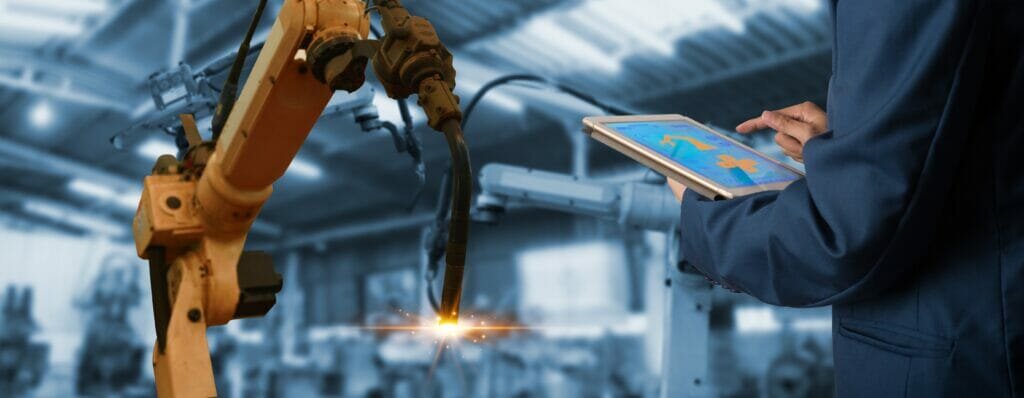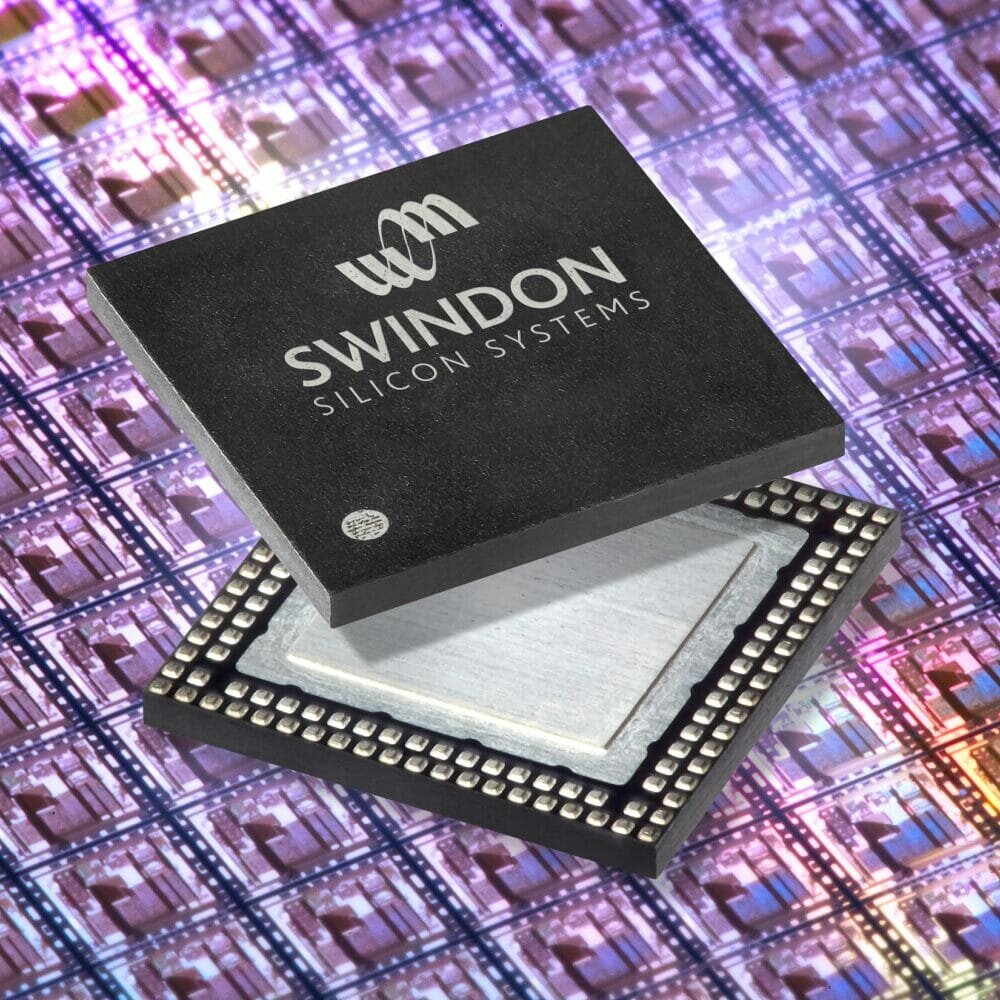While manufacturers are still getting accustomed to methods for interconnecting new technologies to improve efficiency and productivity — the guiding principle behind Industry 4.0 — the next phase of industrialisation is already on the horizon. Here, Richard Mount, Director of Sales at ASIC design and supply specialist Swindon Silicon Systems, provides an overview of Industry 5.0 and the role custom ICs will play in its development.
It’s pretty well understood that Industry 4.0 refers to the integration of automation and data exchange in manufacturing. Underpinning the era are an enhanced use of data and connected devices, advanced analytics and machine learning, a deeper human-machine connection and advanced engineering technologies such as 3D printing.
Industry 5.0 takes these qualities a step further. Broadening the concepts of Industry 4.0, this new industrial revolution is described by the European Union as providing “a vision of industry that aims beyond efficiency and productivity as the sole goals, and reinforces the role and the contribution of industry to society”. Talking about Industry 5.0 right now may appear hasty. After all, we’re still very much in the midst of Industry 4.0. However, given the rapid rate of technological advancements such as AI and machine learning, it’s helpful to start considering how the next industrial era could take form.

Hyper personal
There are many instances where personalisation already succeeds — no two Netflix homepages look the same depending on the user’s preferences, and the menus of some of the world’s biggest restaurant chains allow diners to add and subtract meal components to their liking. But what about in a manufacturing context — how can it embrace the mass customisation era?
Mass customisation sounds like something of an oxymoron. However, with the principals of Industry 5.0, it will become possible to bespoke manufacture at scale. Advanced technologies, like 3D printing and computer aided design, will certainly be central to its development. Production techniques aside, mass personalisation relies on gathering and using data to understand individual preferences and deliver customised products.
Manufacturing companies can leverage big data analytics, AI and machine learning to process vast amounts of data. By analysing customer preferences, purchasing patterns and demographic information, manufacturers can tailor products to meet individual needs. This data-driven approach helps in creating personalised product configurations, packaging, branding and pricing.
At a manufacturing level, data is also crucial to making personalisation happen. For instance, through digital systems and databases, manufacturers can access the specifications of individual customers to guide the manufacturing process and ensure that the personalised products are produced according to the desired configurations.
Data also enables real-time monitoring of production processes. By integrating data from sensors and IoT devices, manufacturers can track the progress of personalised products throughout the production line. This real-time monitoring helps in identifying and addressing any deviations or issues that may arise, ensuring that the personalised products are manufactured accurately and efficiently.
Man and machine
Where Industry 4.0 has focused on ensuring consistency of quality, flow and data collection, Industry 5.0, while still focused on these goals, puts more attention on highly-skilled people and robots working side-by-side. Naturally, this will further ignite the presence of collaborative robots, or cobots, on factory floors.
While historically cobots have not been as popular as industrial robots, several drivers have been proposed to accelerate their adoption, including Industry 5.0. However, as robots become free of their cages and work closer to humans, it is vital that robots have accurate control over their movements.
Cobots use a number of sensors to choose paths, perceive changes in the environment and make correct judgements in complex situations. For example, torque sensors give robots a sense of ‘touch’, enabling them to interact safely with their environment. Most torque sensors employ strain gauges, which convert applied pressure into an electrical signal that can be measured. By combining multiple gauges, the torque sensor can determine the intensity and direction of the force. This allows cobots to delicately handle and assemble fragile items without causing damage.
To help cobots successfully distinguish between inanimate objects and their human colleagues, tactile sensors such as piezoelectric, piezoresistive, capacitive and elastoresistivity types are used. Piezoelectric technologies can gather data from the cobot’s joints and transmit that information to the controller. Capacitive sensors can act as proximity sensors, allowing the cobot to slow down when it detects the presence of an object in its path. Most detection sensors, like area sensors, to help it slow down or stop when human workers are close by avoiding collisions.
Sensor technology can also aid robot maintenace. Temperature sensing is an important part of a robot’s self-diagnosis, as overheating parts are a good indication of a fault. In addition, machine axis patterns — determined by smart sensors in linear encoders — can be used to predict how much wear different parts experience, and therefore when they will need replacing.
The ASIC within
The third thing to know, and a fundamental technology behind these Industry 5.0 trends, is the role of a custom IC. It’s clear that the themes underpinning Industry 5.0 rely on one thing — smart sensors. And, behind those sensors, an ASIC can enable a smarter, smaller, more sophisticated end result.
ASICs are often designed to interface directly with the sensor element, enabling efficient and accurate signal acquisition. They can provide sensor-specific conditioning, amplification, filtering, and digitisation of the sensor’s analogue output to simplify the sensor system design and improve overall performance.
An ASIC could also, if required, optimise power consumption within the smart sensor system by integrating power management functions such as voltage regulators. Other functionalities include data communication, with the ASIC designed to include communication interfaces such as UART, SPI, I2C, or even wireless protocols to enable seamless data transmission to external devices or networks. While some of these requirements could be achieved using an off-the-shelf IC, there are many benefits to the ASIC route.
First, an ASIC design allows investment in performance where it matters. In position sensors for cobots, for instance, this might be a non-linearity specification, equating to accuracy at different scale points. It could equally be an aggressive target on low-frequency noise, which cannot be easily averaged away. This is where working with an experienced ASIC partner yields benefits: the entire signal path can be optimised and simulated down to the finest detail, and proven IP and expertise can be deployed.
In addition, the PCB’s size is reduced, leading to a smaller and lighter device that offers improved dynamics, and is able to serve new applications. Assembly becomes simpler, and the electronics are afforded greater protection from environmental factors. Some customers also value the protection it affords for their circuit IP, particularly those getting ahead of the game with smart Industry 5.0 devices or those working on highly personalised products, as monolithically integrated circuits are far more difficult to reverse engineer than a collection of standard parts wired together in plain sight.
While many manufacturers get to grips with Industry 4.0, knowing how the next phase of industry will take shape has never been more important. The rapid rate at which technology now evolves means Industry 5.0 could creep up sooner than many anticipate. Therefore, knowledge of impending trends and a solid understanding of the electrical components that sit central to their success is key to staying ahead of the curve.
To learn more about Swindon Silicon and its custom IC solutions, visit https://www.swindonsilicon.com/news/
Contact details: SWINDON SILICON SYSTEMS LTD 
Interface House, Interface Business Park
Bincknoll Lane, Royal Wootton Bassett
Wiltshire
SN4 8SY
United Kingdom
Telephone: +44 (0)1793 649400
Email: sales@swindonsilicon.com
www: https://www.swindonsilicon.com/
Blog: https://www.swindonsilicon.com/news/
Linkedin: https://www.linkedin.com/company/swindon-silicon-systems/
Twitter: https://twitter.com/swindonsilicon








